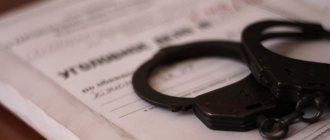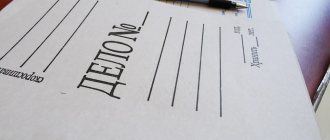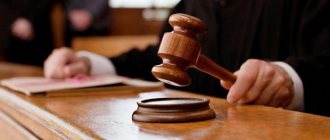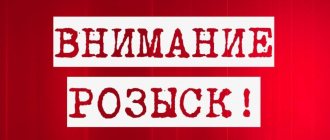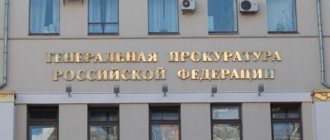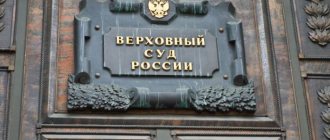From inspection to inspection
Let's start with the concept of “inspection”: this is a visual examination of only those parts of the object that are in the public domain. For example, an open bag in the hands of the owner, the outside of the car, license plates, and so on. It is carried out only by an authorized person and without the participation of witnesses and the use of technical means, although the use of a flashlight is not prohibited. They can even draw up an act filled out in any form.
“Carrying out the procedure properly is not stipulated in the current legislation. Therefore, if there are fears that during an inspection, which takes place without the presence of witnesses, the owner of personal belongings may be given something prohibited, I would recommend insisting on the inspection procedure,” advises civil lawyer Sergei Romanovsky.
In case of refusal to voluntarily provide the opportunity for a visual inspection of things and if there are grounds, the employee has the right to conduct an inspection. This is a legal action performed as part of a criminal or administrative process. A study is carried out with penetration into the object without violating its structural integrity. It is carried out in the presence of two witnesses or using video recording. The results are recorded in the protocol on the search or on the administrative detention, in which the corresponding entry is made. In this case, a copy is given to the owner.
“For example, when inspecting a car, the owner himself opens the hood, trunk or doors. The inspector can only ask to move things and show the contents of the glove compartment and bag. In the event of an inspection, he can do all this himself, but with the participation of witnesses or video recording, explaining all his actions,” says civil lawyer Sergei Romanovsky.
When carrying out an inspection, it is worth filming the entire procedure on mobile devices, and also requiring the employee to begin drawing up a protocol and inviting witnesses. Only after the specified conditions are met should the inspection be possible. It is necessary to take an active part in it: personally open the trunk or bag. The procedure is carried out compulsorily and only if there is a compelling reason (operational information, suspicion of committing a crime). The difference between the concepts of “inspection” and “inspection” lies in the desire of the property owner to demonstrate its contents. If it is not there, law enforcement officers may conduct a forced search. The powers of ordinary security guards standing at the entrance to a station, metro or shopping center, but this does not apply. If a citizen does not want to show the contents of his pockets, he will not be allowed inside.
“The inspection is strictly regulated by law: the involvement of two witnesses, the drawing up of a protocol and the execution of a seizure report. It is also allowed without witnesses if there is a suspicion that the citizen is hiding prohibited items on him, for example, drugs, weapons, explosives. During the inspection, officials may use photo and video recording, which should be recorded in the protocol. The inspection is carried out more freely,” sums up civil lawyer Sergei Romanovsky.
Inspection of items (documents)
| « | » | G. |
(place of compilation)
| Inspection started at | h | min |
| Inspection completed at | h | min |
(position of investigator (inquiry officer),
class rank or title, surname, initials)
in the presence of witnesses:
| 1. |
(Full Name
and place of residence of the witness)
| 2. |
(Full Name
and place of residence of the witness)
| with |
(procedural position, surname, name, patronymic of each person,
participating in the investigative action, and, if necessary, his address and other information about his identity)
in accordance with Art. 164, part one of Art. 176, parts one through four and six of Art. 177
| The Code of Criminal Procedure of the Russian Federation carried out an inspection |
(where and what exactly is also indicated, when, where and during production
what investigative action these items (documents) were seized
Before the inspection begins, the participating persons are explained their rights, duties and responsibilities, as well as the procedure for inspecting objects (documents).
In addition, before the start of the inspection, the witnesses were explained their rights, duties and responsibilities under Art. 60 Code of Criminal Procedure of the Russian Federation.
(signature of witness)
(signature of witness)
| To a specialist |
(Full Name)
| To the expert |
(Full Name)
| his rights, duties and responsibilities provided for in Art. 58 (57) Code of Criminal Procedure of the Russian Federation. |
(specialist signature)
(expert signature)
(signature of an attesting witness) (signature of an attesting witness)
| Persons participating in the investigative action were warned in advance about |
| use of technical means during investigative actions |
(which ones)
| The inspection was carried out under conditions |
(weather, light)
| Inspection established: |
(what exactly, procedural actions are described
in the order in which they were produced, significant
circumstances for this case, as well as statements (explanations) of the persons involved
in investigative action; technical means used during the investigation
actions, conditions and procedure for their use, objects to which these means were
applied and the results obtained)
(signature of an attesting witness) (signature of an attesting witness)
| After the inspection, items and documents |
(repacked (way), sealed
(which seal), certified by the signatures of witnesses and provided with an explanatory inscription about the contents of the package,
where they are sent or where they are stored)
(signature of an attesting witness) (signature of an attesting witness)
| During the inspection it was carried out |
(photography, video, audio recording, etc.)
| Attached to the protocol |
(photographic negatives and photographs,
films, slides, phonograms, video cassettes, computer storage media,
drawings, plans, diagrams, casts and prints of traces made during investigative actions)
| The protocol was presented for review to all persons participating in the investigation. |
| action. At the same time, these persons were explained their right to make contributions subject to |
| comments on its additions agreed upon and certified by the signatures of these persons in the protocol |
| and clarification. Having familiarized yourself with the protocol by |
(personal reading
or announcement of the protocol by the investigator (interrogating officer)
| participants in the investigative action made the following comments about its addition |
| and clarification |
(indicate the procedural status, surname and initials of the participant in the investigative action
and the additions and clarifications he made to the contents of the protocol)
| Witnesses: |
(signature)
(signature)
| Specialist (expert) |
(signature)
| Other persons involved: |
(signature)
(signature)
This protocol has been drawn up in accordance with Art. 166 and 167 of the Code of Criminal Procedure of the Russian Federation.
| Investigator (interrogator) |
(signature)
| « | » | G. |
(place of compilation)
| Inspection started at | h | min |
| Inspection completed at | h | min |
(position of investigator (inquiry officer),
class rank or title, surname, initials)
in the presence of witnesses:
| 1. |
(Full Name
and place of residence of the witness)
| 2. |
(Full Name
and place of residence of the witness)
| with |
(procedural position, surname, name, patronymic of each person,
participating in the investigative action, and, if necessary, his address and other information about his identity)
in accordance with Art. 164, part one of Art. 176, parts one through four and six of Art. 177
| The Code of Criminal Procedure of the Russian Federation carried out an inspection |
(where and what exactly is also indicated, when, where and during production
what investigative action these items (documents) were seized
Before the inspection begins, the participating persons are explained their rights, duties and responsibilities, as well as the procedure for inspecting objects (documents).
In addition, before the start of the inspection, the witnesses were explained their rights, duties and responsibilities under Art. 60 Code of Criminal Procedure of the Russian Federation.
(signature of witness)
(signature of witness)
| To a specialist |
(Full Name)
| To the expert |
(Full Name)
| his rights, duties and responsibilities provided for in Art. 58 (57) Code of Criminal Procedure of the Russian Federation. |
(specialist signature)
(expert signature)
(signature of an attesting witness) (signature of an attesting witness)
| Persons participating in the investigative action were warned in advance about |
| use of technical means during investigative actions |
(which ones)
| The inspection was carried out under conditions |
(weather, light)
| Inspection established: |
(what exactly, procedural actions are described
in the order in which they were produced, significant
circumstances for this case, as well as statements (explanations) of the persons involved
in investigative action; technical means used during the investigation
actions, conditions and procedure for their use, objects to which these means were
applied and the results obtained)
(signature of an attesting witness) (signature of an attesting witness)
| After the inspection, items and documents |
(repacked (way), sealed
(which seal), certified by the signatures of witnesses and provided with an explanatory inscription about the contents of the package,
where they are sent or where they are stored)
(signature of an attesting witness) (signature of an attesting witness)
| During the inspection it was carried out |
(photography, video, audio recording, etc.)
| Attached to the protocol |
(photographic negatives and photographs,
films, slides, phonograms, video cassettes, computer storage media,
drawings, plans, diagrams, casts and prints of traces made during investigative actions)
| The protocol was presented for review to all persons participating in the investigation. |
| action. At the same time, these persons were explained their right to make contributions subject to |
| comments on its additions agreed upon and certified by the signatures of these persons in the protocol |
| and clarification. Having familiarized yourself with the protocol by |
(personal reading
or announcement of the protocol by the investigator (interrogating officer)
| participants in the investigative action made the following comments about its addition |
| and clarification |
(indicate the procedural status, surname and initials of the participant in the investigative action
and the additions and clarifications he made to the contents of the protocol)
| Witnesses: |
(signature)
(signature)
| Specialist (expert) |
(signature)
| Other persons involved: |
(signature)
(signature)
This protocol has been drawn up in accordance with Art. 166 and 167 of the Code of Criminal Procedure of the Russian Federation.
| Investigator (interrogator) |
(signature)
Participants of the inspection
The following must be included in the inspection:
- Inspector (clause 1 of article 92 of the Tax Code of the Russian Federation).
- Witnesses (clause 3 of article 92 of the Tax Code of the Russian Federation). Any disinterested persons in the amount of at least 2 people can be invited as witnesses (Clause 2 of Article 98 of the Tax Code of the Russian Federation). Witnesses must confirm the content and results of the inspection, the facts identified (clause 5 of Article 98 of the Tax Code of the Russian Federation).
The taxpayer has the right to participate in the inspection personally or through his representative (Clause 3 of Article 92 of the Tax Code of the Russian Federation). Tax authorities are obliged to provide the taxpayer with the opportunity to exercise his right, namely: to notify him of the time and place of the inspection. The courts come to this conclusion (resolution of the Federal Antimonopoly Service of the Moscow District dated August 19, 2009 No. KA-A41/8084-09).
The necessary specialists may be invited to carry out the inspection (clause 3 of Article 92, Article 96 of the Tax Code of the Russian Federation).
Basic goals
Inspections are carried out to (clause 4.1):
- quantify the parameters that characterize the standard or operational technical condition of the property;
- promptly identify discrepancies between the condition of the property and the design indicators and the requirements of the legislation of the Russian Federation;
- promptly identify threats to the safety of life and health of citizens and the environment;
- determine the scope of work, formulate and adjust the plan and list of work performed during property maintenance, etc.
Who needs it
The inspection is carried out to determine how well the information you provide and the declared indicators correspond to the real state of affairs.
For example, tax authorities want to make sure that the office is operational, warehouse or production facilities are available. That the premises were actually repaired, which you recognized as expenses and for which you claimed VAT reimbursement. Or that the area of the sales floor actually corresponds to the value reflected in the declaration/calculation for UTII and does not exceed the permissible values.
And of course, they come for an inspection to see if you are doing something that would be extremely fiscally interesting. Maybe some kind of stamps, blank forms from other people's offices, people not working in the company, strange companies or other suspicious fabrications. Suddenly something catches your eye, or careless employees blurt something out.
Tax officers often come for inspection accompanied by police officers. For what? To keep you in good shape. The methods are stricter, the requirements are louder and more specific. An inspection as part of operational investigative activities (OPM) is not a tax trick.
We behave very carefully. No fuss. No aggression. Definitely without fear. Nothing like this has happened yet - they are inspecting and looking for something. But if your business is clean, and you know how to behave and are ready not to obey, but to act, you should not be afraid of negative results. Therefore, after the natural slight excitement of a sudden visit, calm down, collect yourself, and tune in to a business-like tone. And start working with auditors, trying to manage the situation and keep all actions under control.
About access to residential premises
Access to the residential premises of tax officials conducting tax audits is only possible
1) with the consent of the persons residing therein or
2) by court decision or in cases specifically prescribed by law. A tax audit does not apply to these special cases.
It is interesting that if a remote server with a company database is installed in the apartment of an IT employee, and the accounting records are stored in the director’s house, it is impossible to get to them without initiating a criminal case.
Inspection of the residential premises of an individual entrepreneur or an ordinary citizen as part of a tax audit is also possible only with the consent of the persons living in them.
What can be inspected and what cannot?
In accordance with sub. 6 clause 1 art. 31, paragraph 13 art. 89 of the Tax Code of the Russian Federation, tax authorities can inspect premises: production, warehouse, retail and any others, as well as territories that the taxpayer uses to generate income or that are related to objects of taxation, regardless of their location.
Inspection, in accordance with clause 2 of Art. 91, art. 92 of the Tax Code of the Russian Federation, documents and objects, including taxable items belonging to the taxpayer, may also be subject to taxation.
Find out whether inspectors can inspect computers and the software installed on them here .
NOTE! Illegal refusal (obstruction) of access to a tax authority official conducting an audit (inspection) is recognized as an administrative offense and entails liability under Art. 19.7.6 of the Code of Administrative Offenses of the Russian Federation in the form of a fine in the amount of 10,000 rubles.
It is prohibited for representatives of the tax authority to enter the residential premises of individuals who are not individual entrepreneurs without their permission and against the will of the residents (Clause 5 of Article 91 of the Tax Code of the Russian Federation). The exception is if the inspectors have a court decision (clause 1 of the letter of the Federal Tax Service of the Russian Federation dated May 23, 2013 No. AS-4-2/9355).
Assess the likelihood of your company being included in the inspection plan of the Federal Tax Service Inspectorate using the material “Tax audits in 2022 - list of organizations.”
Results
Inspection of premises and territories allows tax authorities to obtain evidence of various tax offenses. It is carried out during a tax audit in the presence of witnesses and with the participation of specialists (if necessary). The person being inspected has the right to be present during the inspection, and the results of the inspection are documented in a protocol.
Sources:
- Tax Code of the Russian Federation
- Order of the Federal Tax Service of Russia dated November 7, 2018 N ММВ-7-2/ [email protected]
You can find more complete information on the topic in ConsultantPlus. Free trial access to the system for 2 days.
About access: who and when
The procedure for tax officials to access the territory or premises to conduct a tax audit is regulated by Article 91 of the Tax Code.
When is it legal:
1. Only officials of the tax authority who directly conduct a tax audit have access. That is, not any inspection employee, but only those who are authorized to carry out inspection activities and are indicated in the relevant administrative document.
2.Visitors are required to present official identification and:
- decision of the head of the tax authority - in case of an on-site tax audit or
— a reasoned decision to conduct an inspection as part of a desk audit. The resolution is drawn up and signed by the inspector conducting the desk audit and approved by the head of the tax inspectorate.
Therefore, the first thing you should do is check all the documents and credentials of the inspectors who visited the company. Persons not specified in the documents do not have the right to be on your territory and cannot inspect territories, premises, documents and objects. You can categorically protest and not let them in.
